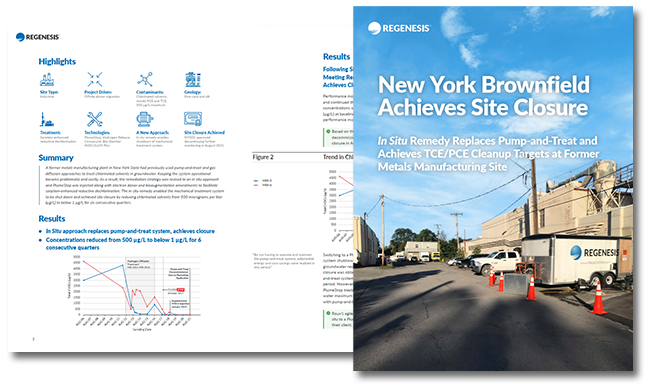New York Brownfield Site Achieves Site Closure
Case study highlights
In situ remedy replaces ex situ system and achieves PCE and TCE cleanup targets at former metals manufacturing site:
-
a PlumeStop permeable reactive barrier (PRB) replaces pump-and-treat system and achieves site closure
-
Concentrations reduced from 500 µg/L to below 1 µg/L for 6 consecutive quarters
-
Significant cost and energy savings achieved by decommissioned pump-and-treat system
7m 47s reading time

At a former metals manufacturing facility in upstate New York, historic use of chlorinated solvents had resulted in groundwater contamination with tetrachloroethene (PCE) and trichloroethene (TCE). A pump and treat system had been operational on the site for 10 years, successfully reducing contaminant concentrations, but could not reach the clean up targets required for site closure.
Benchmark, a leading engineering and redevelopment consulting company, quickly developed an in situ approach to achieve the project objectives and facilitate site closure. After evaluating remedial alternatives, Benchmark proposed a new Corrective Action Plan (CAP), specifying the in situ application of PlumeStop® (colloidal activated carbon), Hydrogen Release Compound® (HRC), a controlled-release electron donor, and Bio-Dechlor INOCULUM Plus® (BDI Plus), a bioaugmentation culture containing Dehalococcoides sp. and other beneficial microbes.

 Americas
Americas Europe
Europe Français
Français Deutsch
Deutsch Italiano
Italiano Español
Español
